







While traveling in Nepal, Olivia Lantry was among the students who’ve had the good fortune of seeing parts of the world few people ever see. While on the Himalayan Trekking and Temples program, she hiked through remote regions of Nepal to view some of the world’s most awe-inspiring sights – the snow-capped Himalayan mountains, the rhododendron forests, the glistening waterways.
It was her fifth trip with Rustic Pathways, and the year was 2017 – the last time this particular program was offered. Now Rustic is relaunching this program to give more students the same opportunities of traveling in Nepal.
“Out of all my Rustic trips, this trip for me was the best and will impact me forever,” Lantry said. “I loved not only the country, but the people and the ‘go with the flow’ type of itinerary. The experience was unforgettable.”
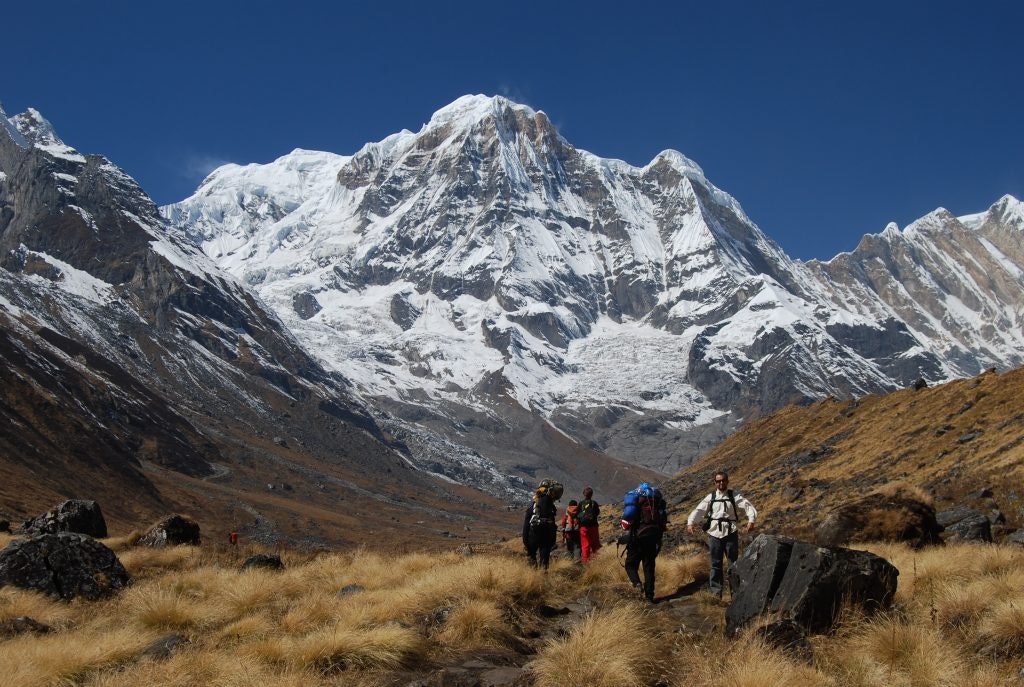
The program challenges students on multiple fronts – physically, emotionally and for many students spiritually as the teens learn about Hindu and Buddhist traditions. The students visit the cities of Kathmandu and Pokhara, spend two days rafting, four days hiking, and much time seeing how the Nepalese people live.
The program begins in the capital city of Kathmandu, which is named after a wooden temple (kath – “wood”; mandir – “temple”). Before touring the city, students are given the cultural dos and don’ts. This includes walking on the left, removing shoes when entering homes, avoiding pointing at people, and making sure you don’t touch people on the head or shoulders.
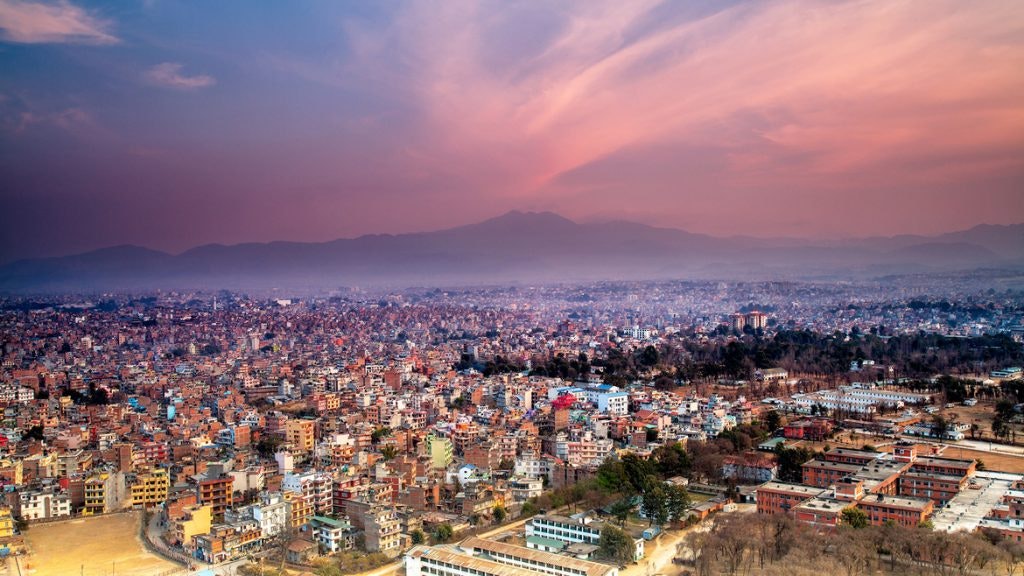
After orientation, students explore the city, including the Syambhu Nath Temple, which is commonly known as the Monkey Temple and is a UNESCO World Heritage site. There are monkeys living on the temple grounds that are considered holy because they are said to have sprung from the head lice of a deity of wisdom and learning.
Country Director Sudarshan Deora says the temple is a good example of both Buddhist and Hindu architecture and artwork. The large majority of the country is Hindu, but there is a Buddhist presence as well in the city.
The temple includes a 13 tiered structure that signifies the stages to reach nirvana. It also has a cubical tower painted with the eyes of Buddha looking in all four directions.
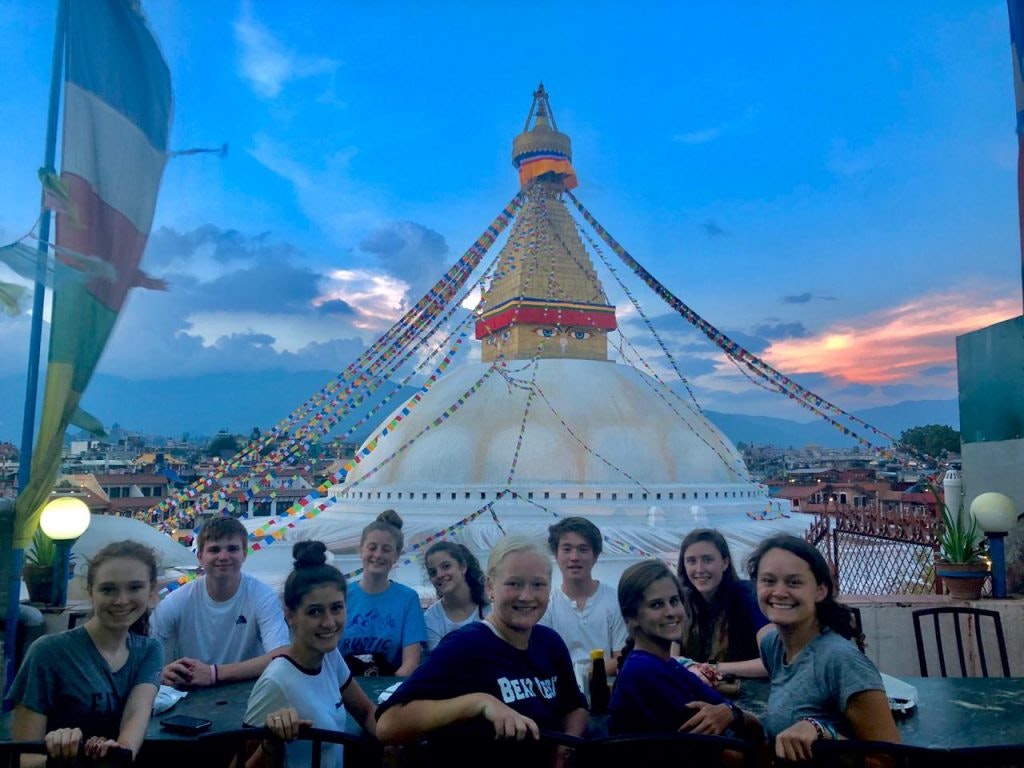
In addition to the temple visit, the students also see the Kathmandu Durbar Square that held the palaces of former kings. While in this area, the students may be lucky to see the Living Goddess or Kumari who is worshiped by both Hindus and Buddhists. She is a child deity who is a young girl that must pass rigorous testing to be selected. She is believed to be the incarnation of the Hindu goddess Durga. Catching a glimpse of her is said to bring good fortune.
After getting this first look at life in Nepal, the students leave the urban area to go on a two-day whitewater rafting trip on the Trisuli River. Afterwards they head to Nepal’s second largest city of Pokhara where they prepare for their four-day trekking expedition.
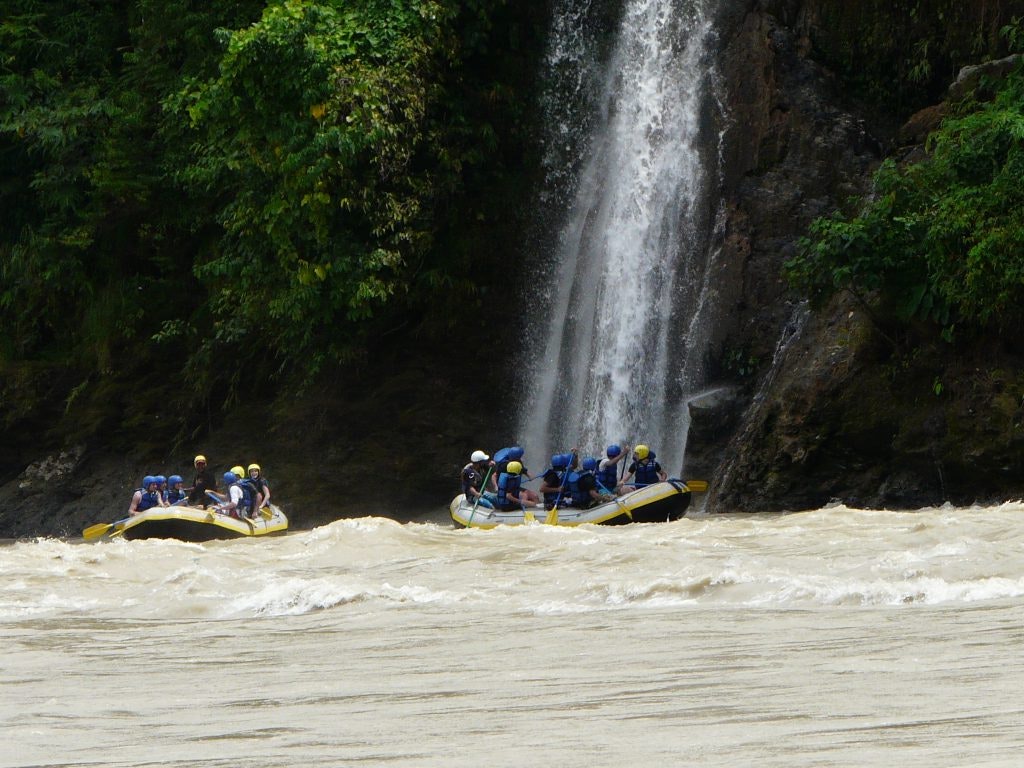
Students who love hiking will treasure this portion of traveling in Nepal. They spend three to four hours a day walking through stunning regions of Nepal. Each day the goal is to reach a particular remote village, where they will stay in a tea house that is Nepal’s version of a guest home.
Along the way, they’ll get a clear view of how Nepalese people live. Deora says students are often struck by how hard women in the villages work.
“Ladies will walk two or three kilometers up and down hills with huge stacks of wood or hay on the back,” Deora said. “They are so grateful, though, for what they have.”
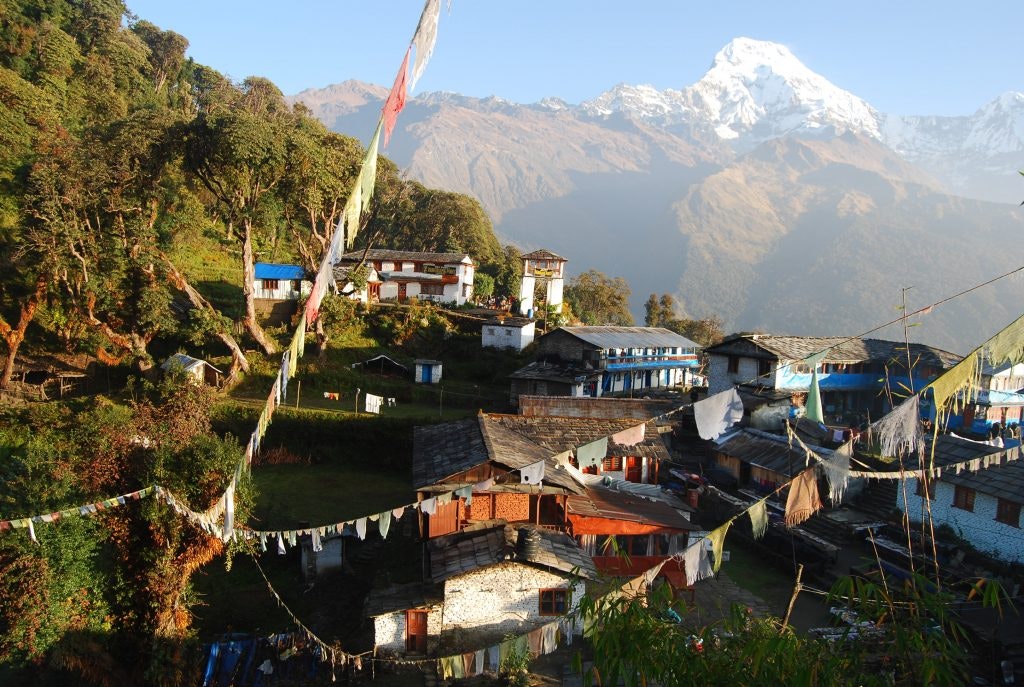
Their villages are tucked amid regions with river gorges and colorful rhododendron forests. The rhododendron arboreum is a tree species that has brilliant red flowers when in bloom and is the national flower of Nepal. These forest areas are home to a number of endangered species. There also are a variety of medicinal plants, including the East Himalayan Yew. It is an endangered wild plant that is used to make the cancer medication Taxol.
Students will get some of the best views when they climb Poon Hill, where they can see some of the world’s tallest mountains. The hill is 3200 meters high, and it is one of the most popular trekking destinations in the country. Many visitors take a three-day hiking path to the site that is much shorter than some longer trekking routes in Nepal.
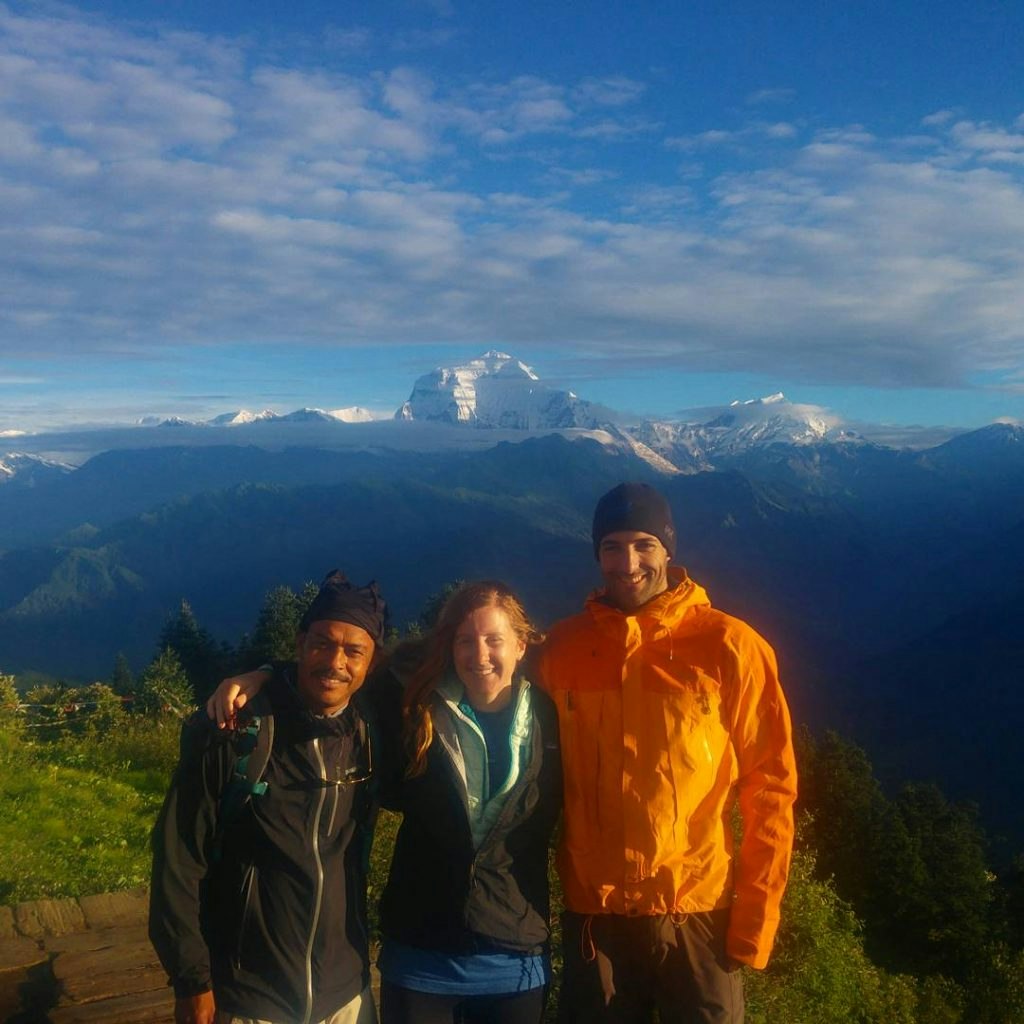
Students stop to take a photo on Poon Hill. Photo: Rustic Pathways
After this stop, the students spend their last day hiking mostly downhill to the popular village of Ghandruk. Deora says, “It is the most beautiful village in all of Nepal.” CNN Travel concurred when it named the village one of the most scenic towns in Asia. (Also on the list is Phuket in Thailand, which is a stop during Rustic’s Amazing Thailand program).
After completing the trekking part of the journey, the students head back to Pokhara, which is home to many of the elite Gurkha soldiers who have been recruited as UN peacekeeping forces for war zones around the world. Pokhara is on the shore of Phewa Lake and is considered the tourism center for Nepal.
The teens can add-on a massage if they want a relaxing recovery from hiking. They also will explore the town, ascending the steps to the Buddhist Peace Pagoda or Temple.
Peace Pagoda in Pokhara, Photo: Rustic Pathways
Likewise, they’ll visit a waterfall and the Madhav cave that is known for its many bats, which are treasured animals to Hindus. No need to fear though, the students will not go inside. Instead they’ll explore Hindu displays outside the cave.
While visiting these areas, students have an important question to consider. They must decide if they want to go plunging off a platform during a bungee jumping activity and/or if they’d like to go ziplining the next day. They have to decide before they see the activity venue. Here is a photo and brief video that shows the thrills that await them if they decide to go:
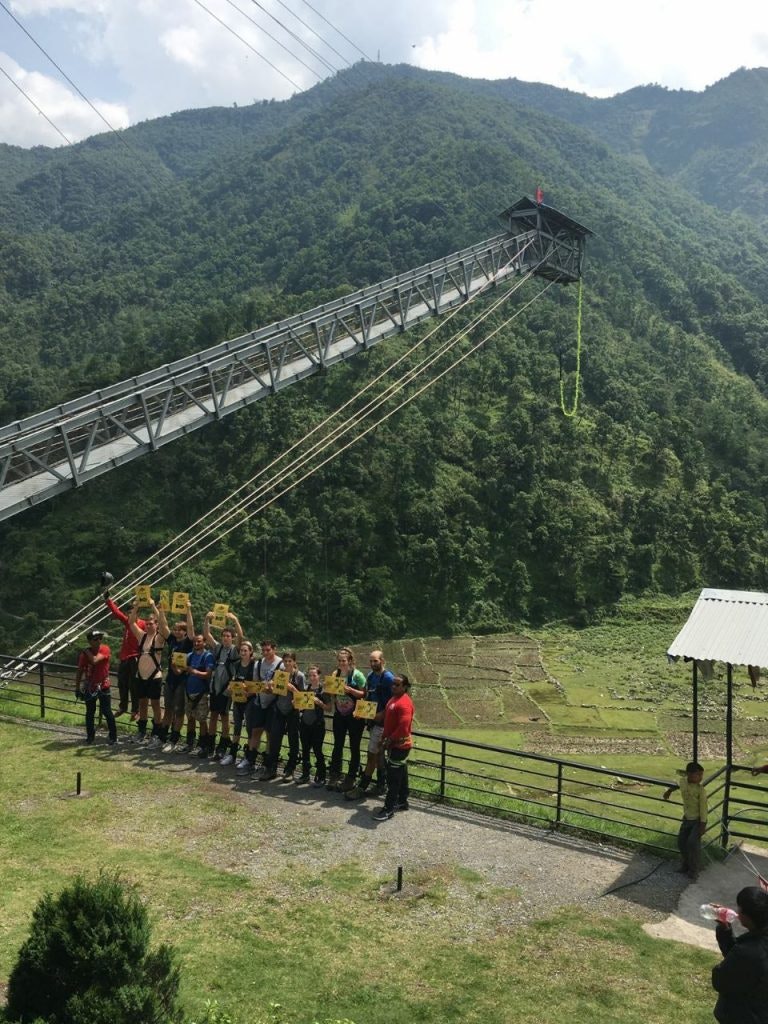
After completing this day of adventure and learning, the students head back to Kathmandu.
Back in the capital city, the students visit another palace square – the Bhaktapur Durbar Square. They also walk to the famous Hindu temple – Pashupatinath. There students will learn about Hindu’s beliefs on death and cremation.
Bodies are burned on platforms above the river outside the temple. It’s believed that cremation here will ensure the person will be born as a human in the next life. Possessions are often burned as well. Witnessing the ceremony can spark many emotions in students.
“Cremation in Hindu culture is unlike anything I’d experienced – so sacred from anything that I will never be able to explain it with justice,” Rustic alumna Socia Morrish said. “The ambiance was silent and eerily peaceful… Gently aged faces… were miserably heartbroken and were still absorbed by the hope that their relatives will obtain nirvana during their new journey beyond death.”
The poignant moments come near the end of the program when students will have time to reflect during their Rustic Ties discussion. That is when students often realize how much the journey has impacted them.
Like Olivia Lantry, other students that went on the program found it to be a one-of-a-kind experience. Alumna Victoria Curtin also called it “one of the best trips I’ve ever taken.” It’s certainly a journey where from beginning to end they discover the true meaning of the greeting “Namaste.” And that is a lesson they’ll forever remember as they head back home.
For more details on traveling in Nepal, please visit our program page.